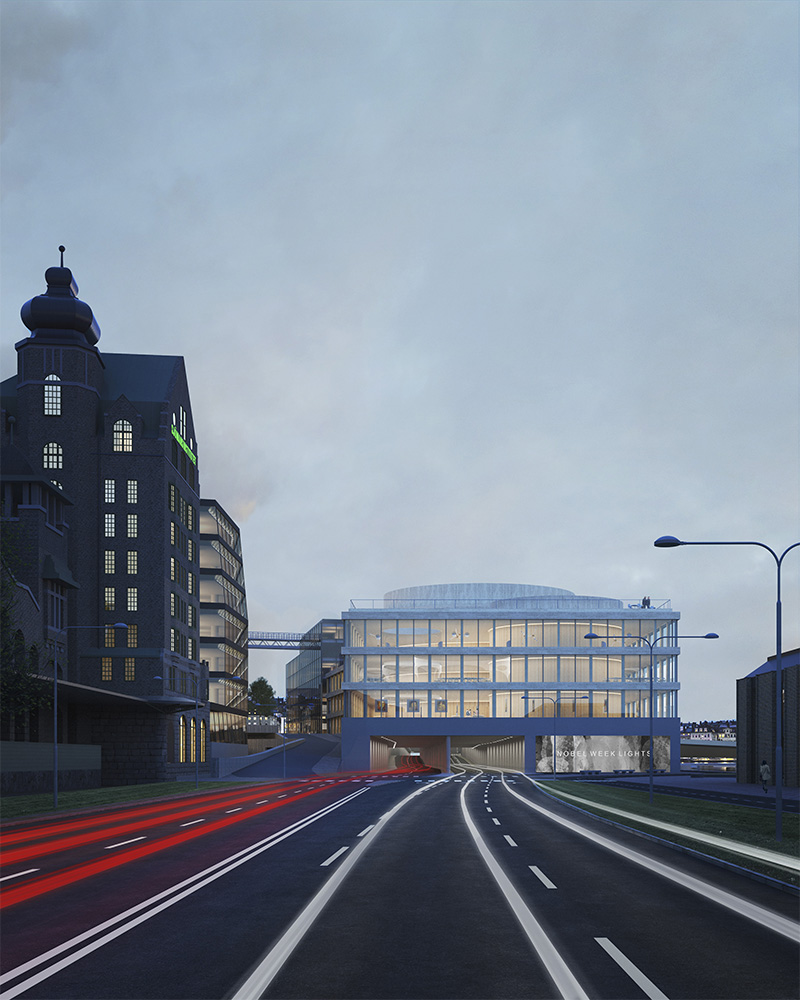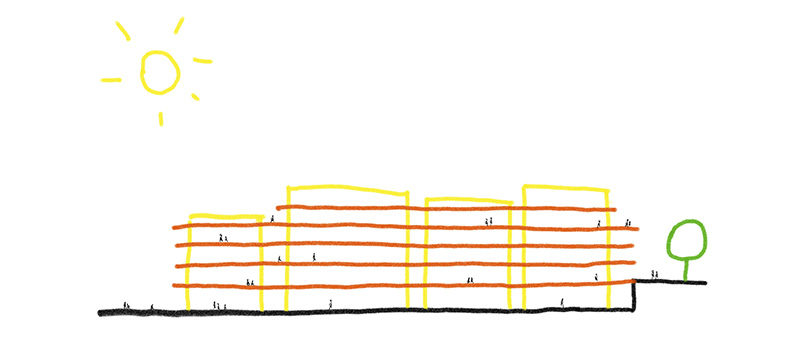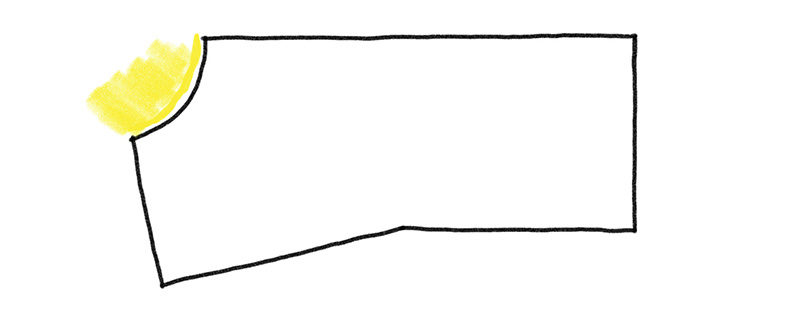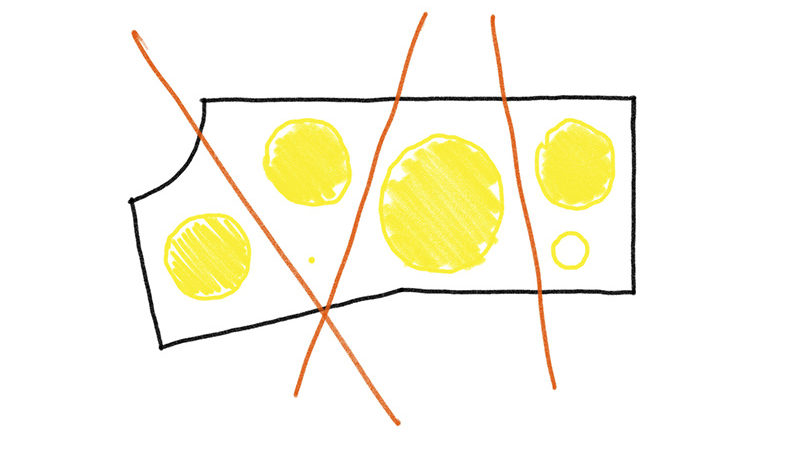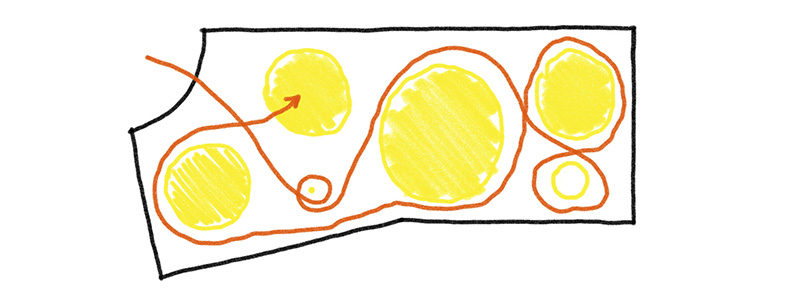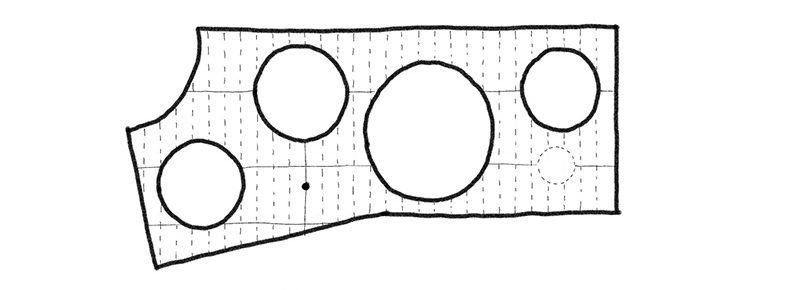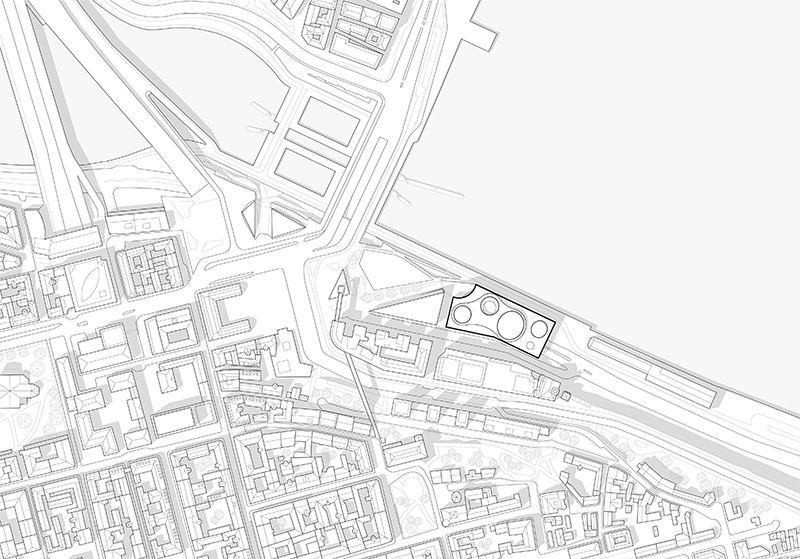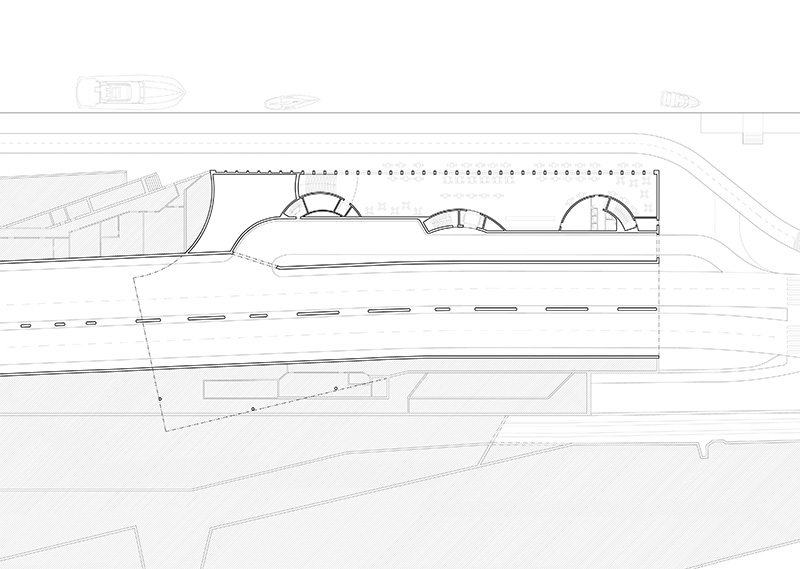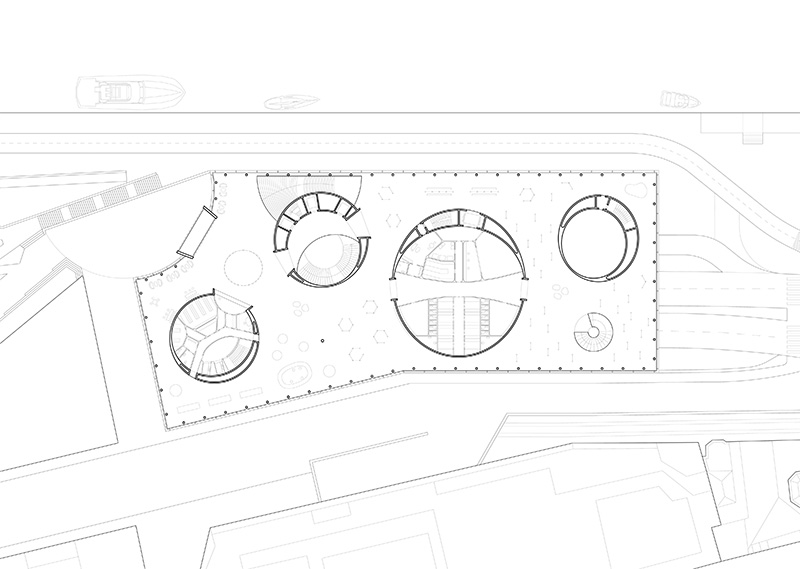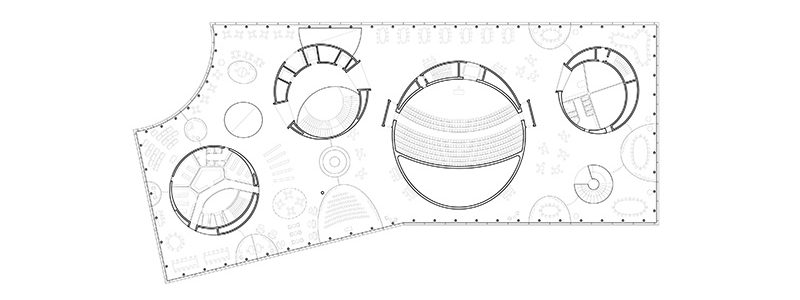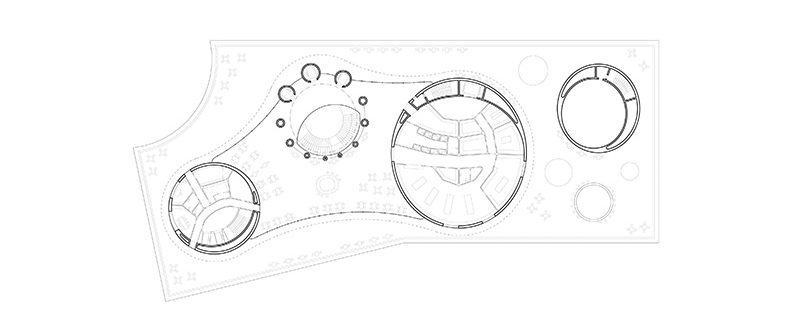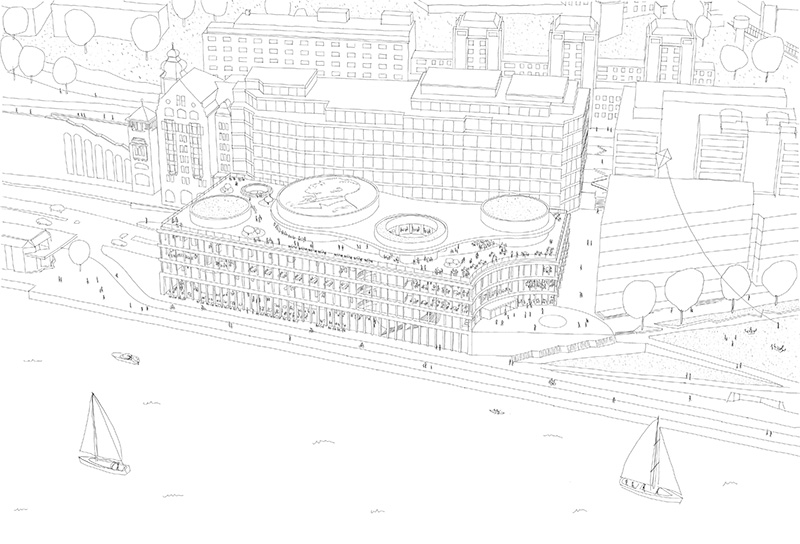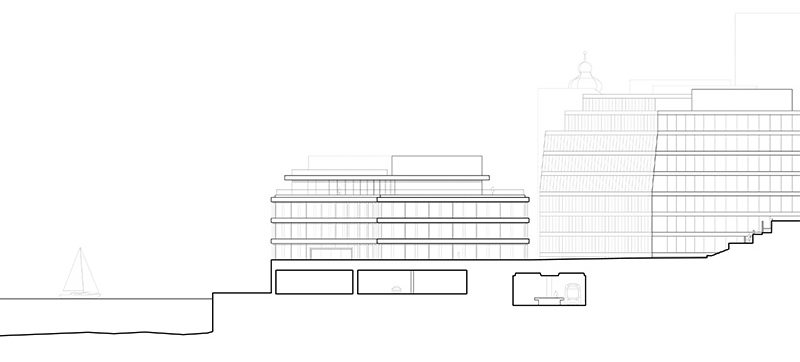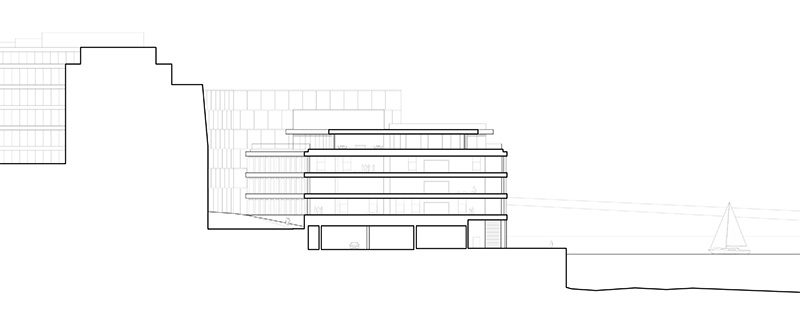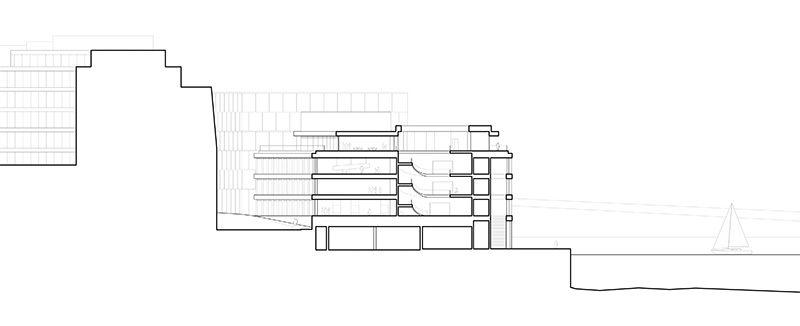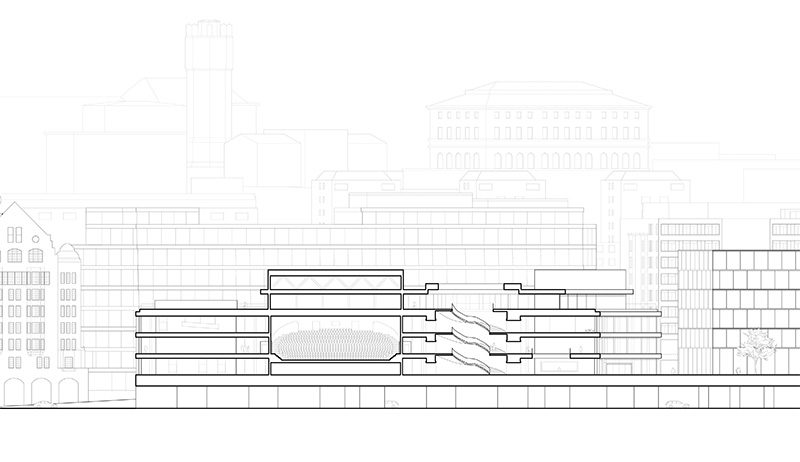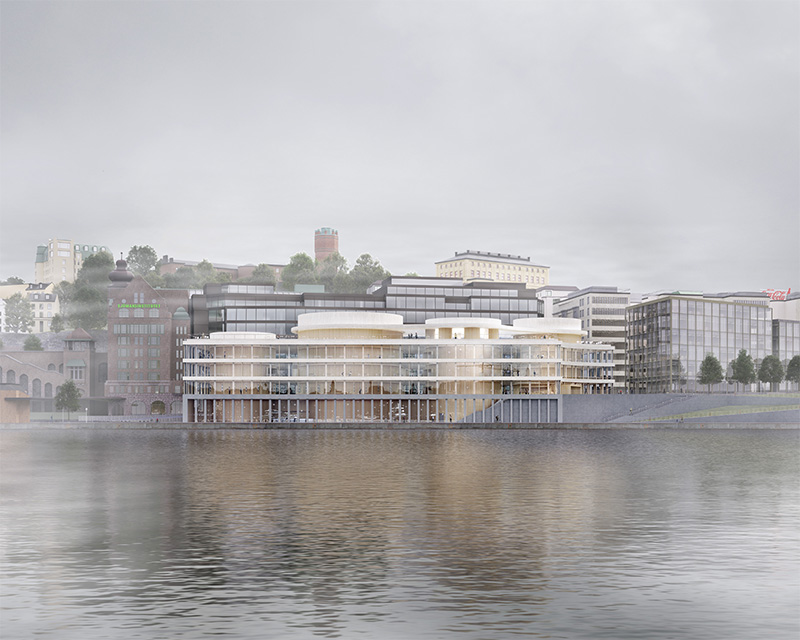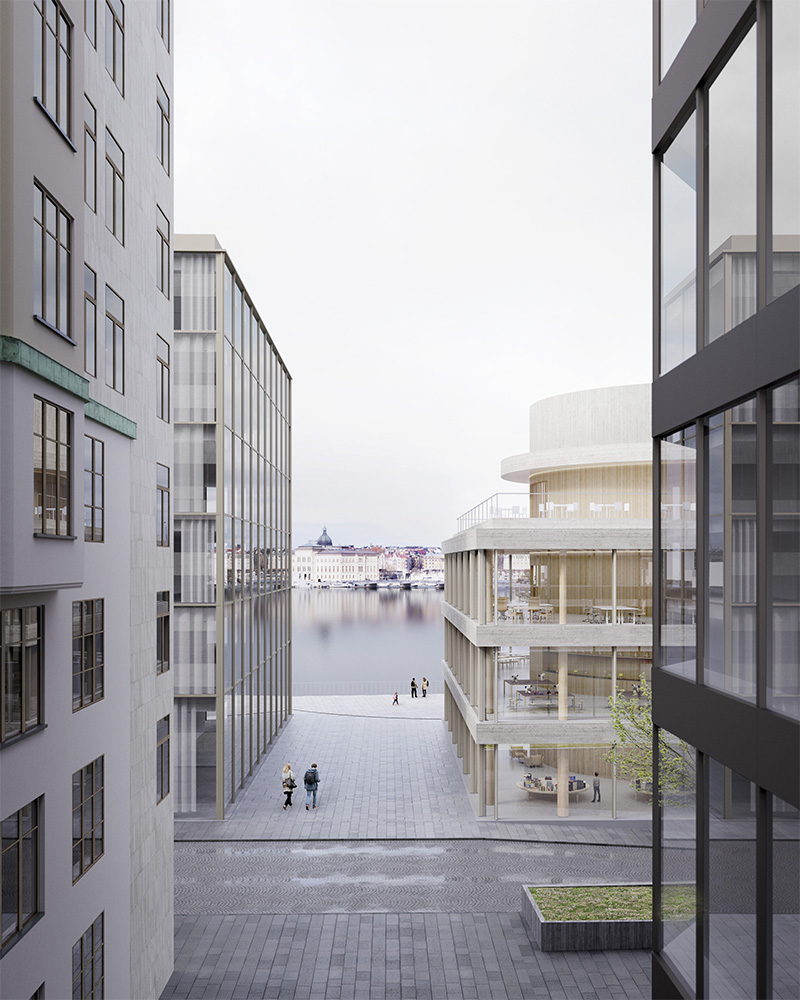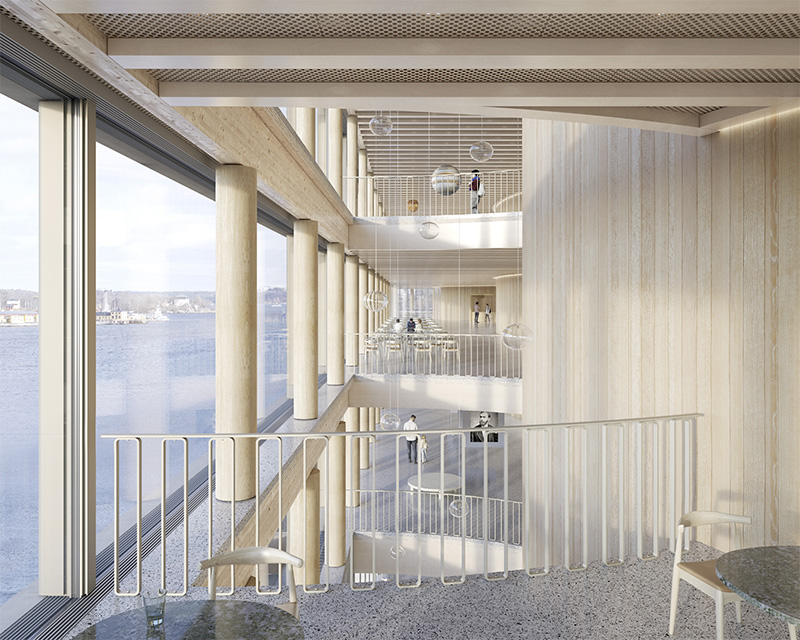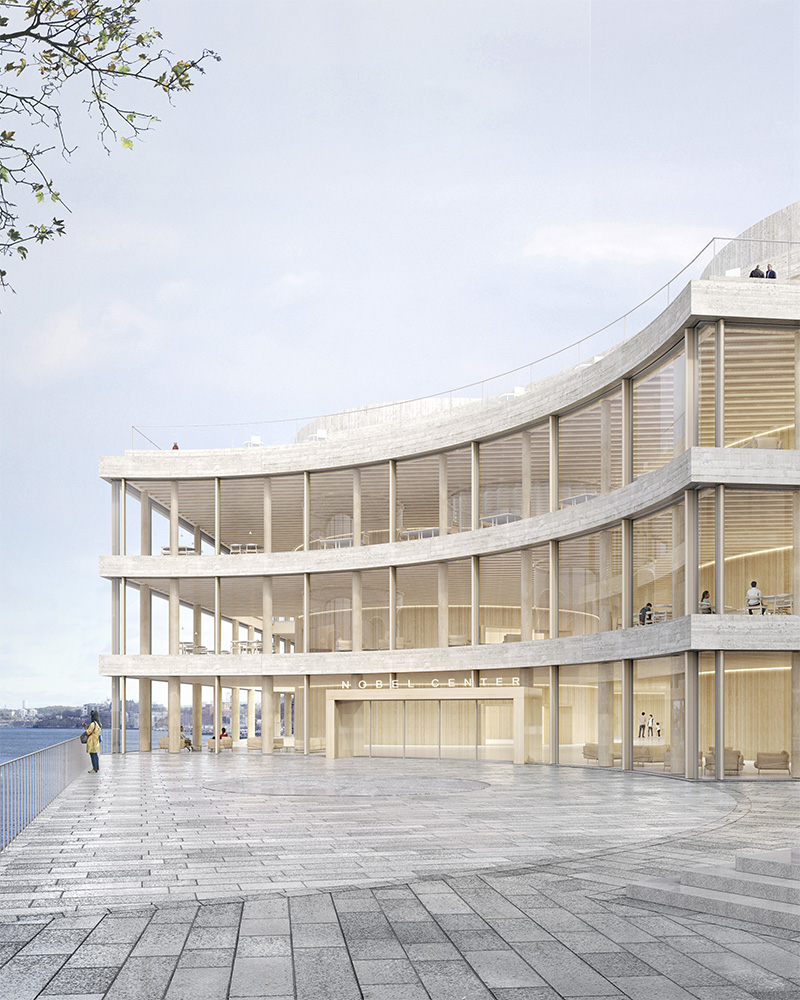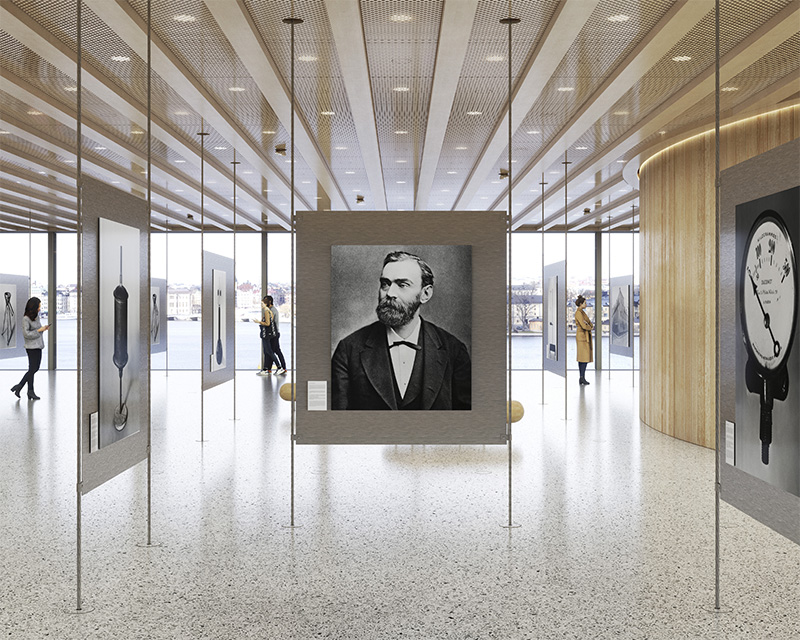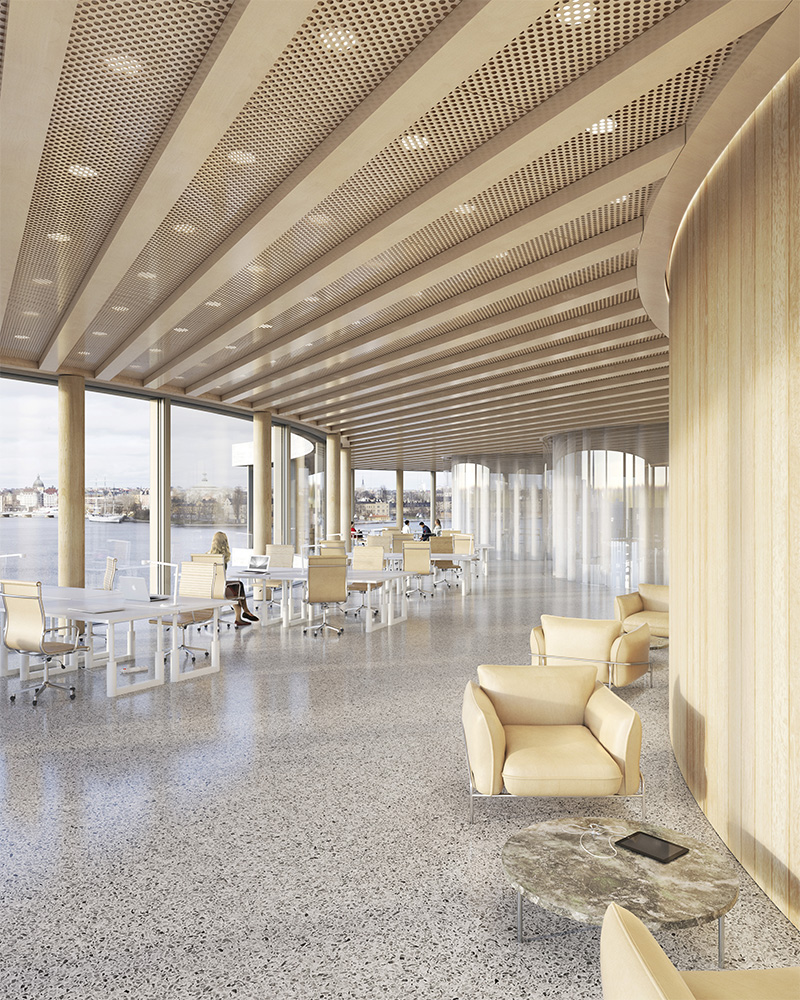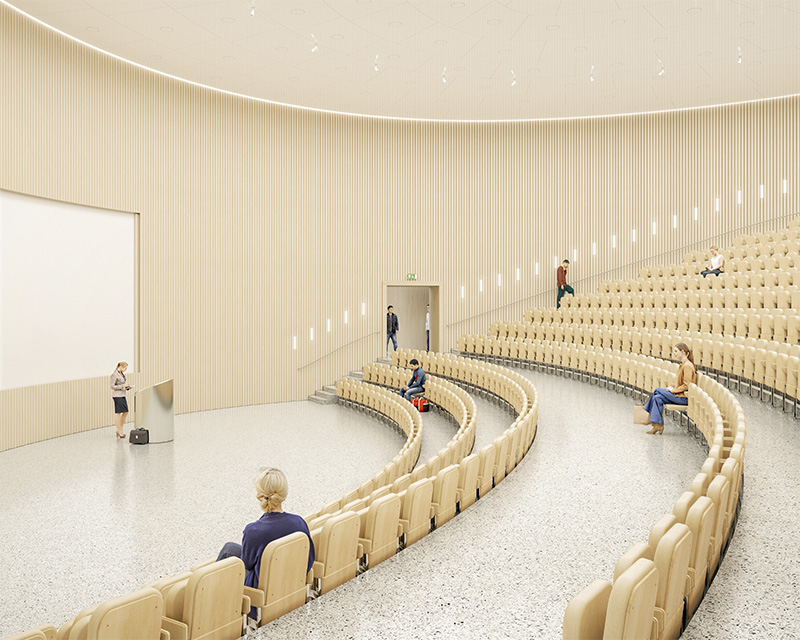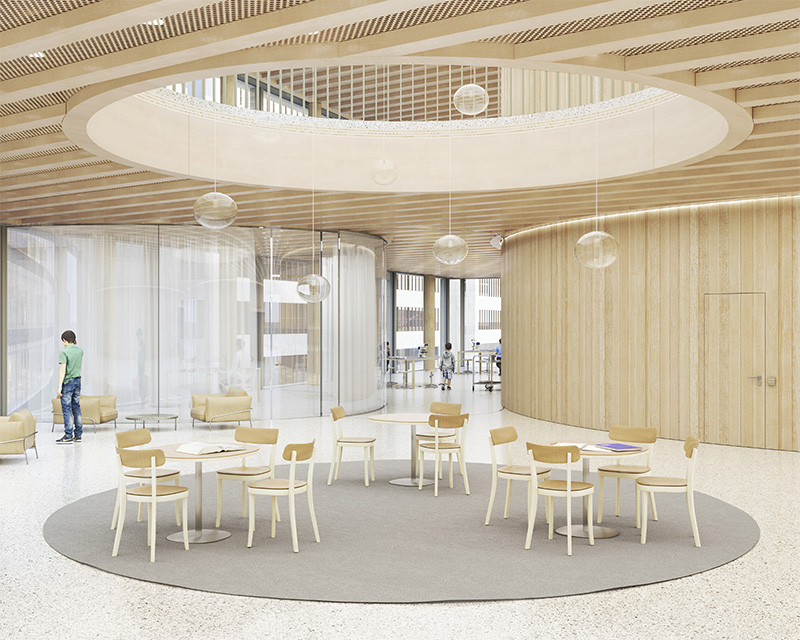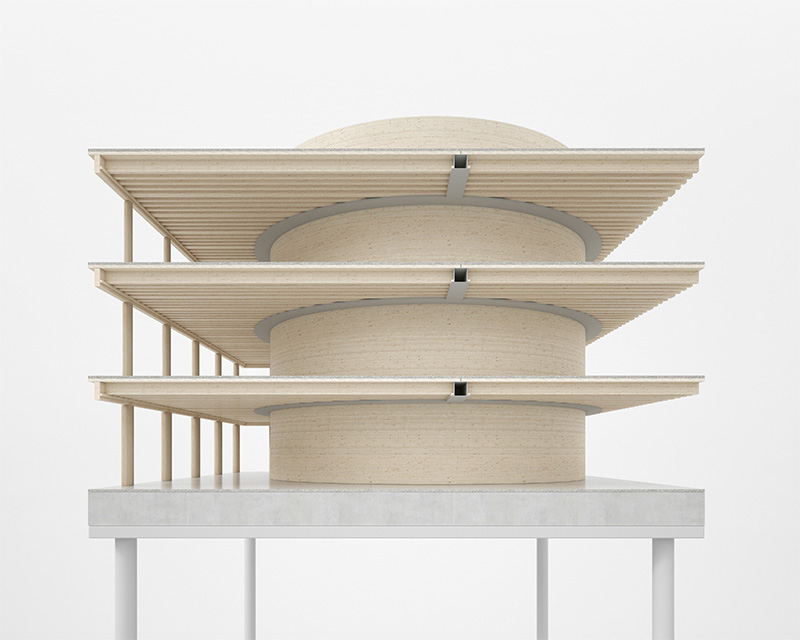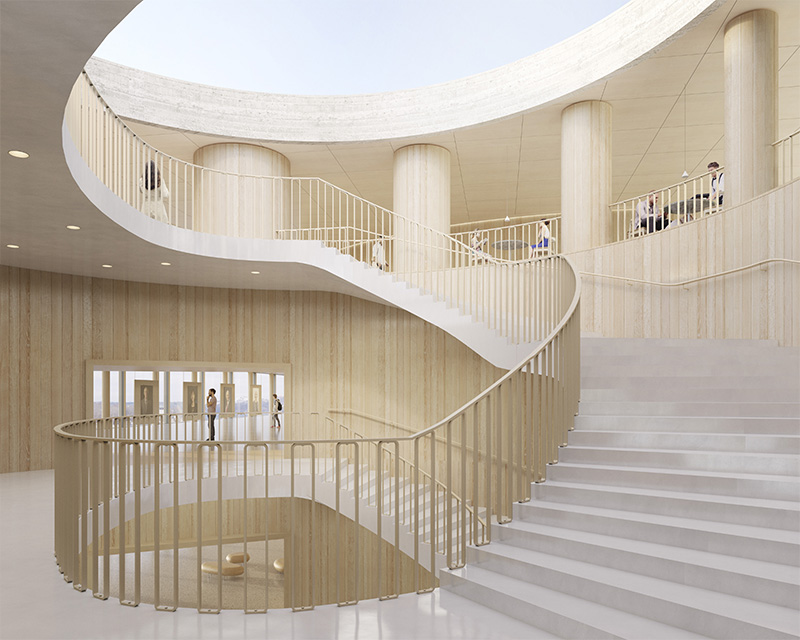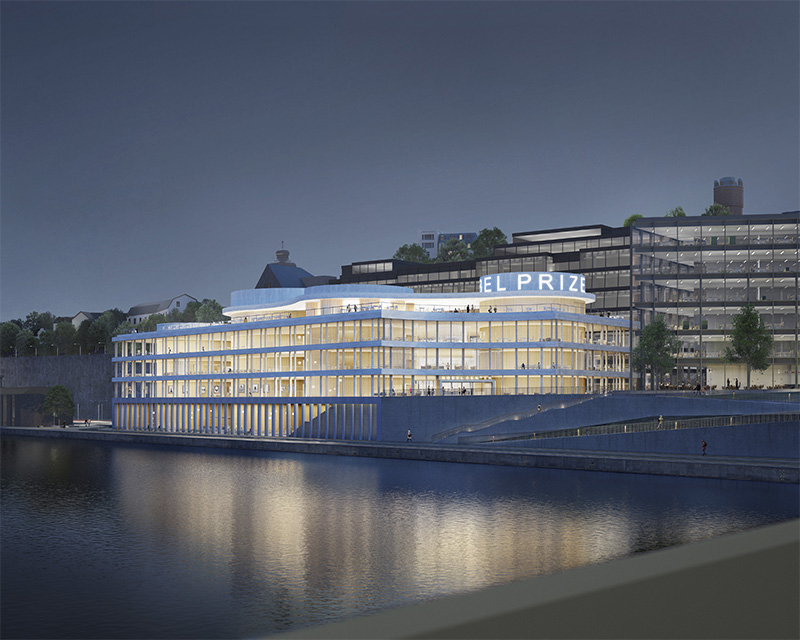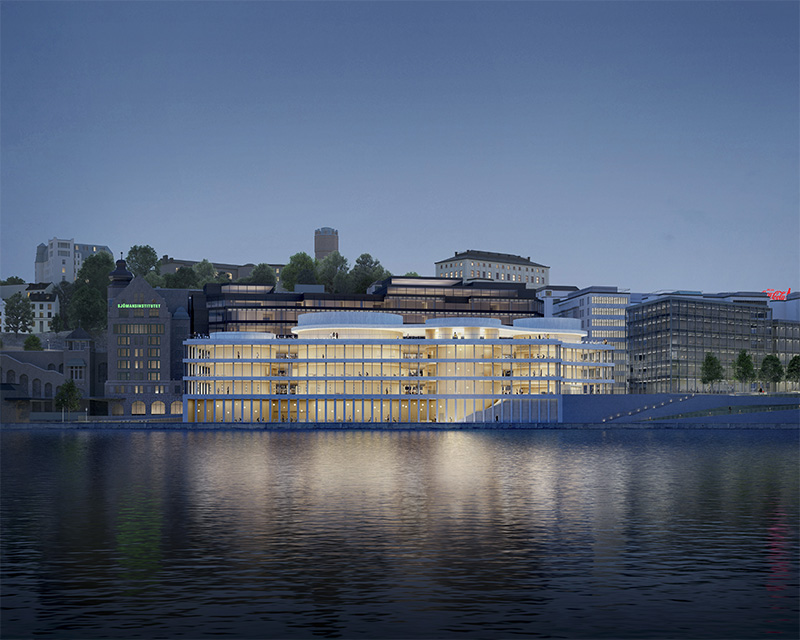Nobel Center, Stadsgårdskajen
This proposal for a Nobel Center at Stadsgårdskajen sits nearby one of the main public hubs in Stockholm. The detail plan, originally designed for a quadri-partite office building, should now give form to The Nobel Center, a public building of both local and global concern.
We felt it was important that the Nobel Center should be read as one building rather than four as suggested by the detail plan, and that a building on this plot should be of clearly public character.
The building is intended for daily use gathering the different activities of the Nobel Foundation and suggests a building functioning as a kind of science- and cultural hub to promote knowledge and curiosity. The annual festivities will remain in Konserthuset, Stadshuset and Oslo, a way to honor the long tradition of the Nobel Prize.
The internal structure is built up by six load bearing elements, one for each Nobel Prize category; four large wooden cylinders, one spiral staircase and a singular steel column. These elements pierces the floor slabs and allows for continuous spaces connecting the building’s various activities.
A café in the lower quay level, together with a restaurant and rooftop terrace at the upper level, ties the building together with public functions from top to bottom. Between these levels there is room for exhibition spaces, conference areas, educational areas and office spaces.
The building is characterized by its four solid cylinders and its open floor plans, a formal answer to site regulations, site conditions and program. The spatial program, including exhibition spaces, educational areas, office, conference, auditorium, café, restaurant, and more, has been divided in two categories; enclosed non day-lit spaces, and open day-lit spaces.
The non-day lit spaces are enclosed within the four cylinders, and the day-lit spaces take place in an open relation in-between the cylinders, allowing for visual connections between the different parts of the building.
The building’s load bearing structure is primarily made of wood; vacuum pressed CLT elements together with turned oak columns as vertical structure and CLT rib deck panels as horizontal structure. As a more durable alternative to wood, the floor slabs have an external cladding of pre-fabricated concrete elements.
The horizontal surfaces of these elements are cast against a steel surface, as a prolongation of the ceiling and floor, whilst the vertical surface is cast against a wooden surface, reflecting the buildings structural material.

